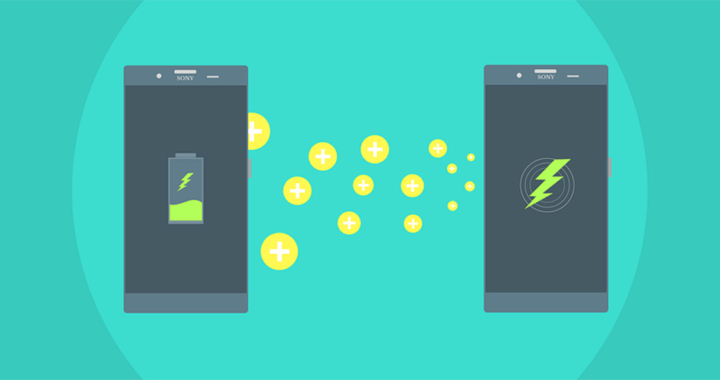Fast charging is a technology for managing power delivery to either allow a higher level of currents or increase the voltage flowing to the battery of mobile devices such as smartphones. Also known as Quick Charge based on the proprietary technology of Qualcomm, Adaptive Charging and Turbo Charging based on the respective standards of Samsung and Motorola, VOOC Flash Charging of Oppo, and SuperCharge of Huawei, among others, fast charging enables rapid and efficient charging of batteries. This article lists and describes its advantages and disadvantages.
Pros: Benefits and Advantages of Fast Charging Technology
1. Improves the Usability and Mobility of Mobile Devices
Devices such as smartphones and tablets have sophisticated computing capabilities. However, with higher computing powers come higher power requirements due to advanced hardware specifications. Most of these devices would not last a day under moderate to heavy use. A smartphone or tablet is essentially useless once its battery runs out of charge. Take note that increasing further the storage capacity of lithium-ion batteries found in these devices is not a doable workaround because of form-factor and safety considerations.
Fast charging provides an alternative solution. The technology makes charging more convenient by lessening the time it takes for a compatible battery to get a substantial amount of power needed to operate a mobile device. In addition, some portable battery packs or power banks have fast charging features. These accessories improve further the usability and mobility of mobile devices.
2. Promotes the Use of Batteries with Higher Capacities
Several smartphones and tablets in the market have higher battery capacity than most of their counterparts due to their large IPS display or OLED display screen real estate and/or advanced hardware specifications or processing capabilities, among others. Other manufacturers simply include higher-capacity batteries in their products for marketing purposes or as part of value proposition.
The problem with devices equipped with a higher-than-average battery capacity is that they take longer to charge fully. It would be impractical to wait for them to reach full charge. During time-critical scenarios, for example, users would just unplug them from an outlet and settle for partially-charged batteries. However, because fast charging tries to provide as much charge as possible for a shorter period, the technology makes batteries with higher capacities practical.
3. Includes Hardware and Software Failsafe Mechanisms
Another advantage of fast charging technology is that it also includes hardware and software mechanisms for protecting the integrity of the batteries, primarily by protecting against overheating and power surge that could lead to internal circuitry damages and explosions.
Take note that the standard from Samsung fast charges batteries until they reach a certain charge level or percentage. Thus, upon reaching such percentage, the technology adapts to normal charging mode. The same principle also applies to the Intelligent Negotiation for Optimum Voltage or INOV technology under the main quick charge technology of Qualcomm. Some systems have a built-in heat detection mechanism that reverts to normal or suspends the entire charging process whenever the battery and device reach critical temperature levels.
Cons: Limitations and Disadvantages of Fast Charging Technology
1. Shortens the Lifespan of Lithium-Ion Batteries
One of the critical limitation or advantage of fast charging is that it expedites the optimum and usable life of lithium-ion batteries. Take note that these batteries have limited charge-discharge cycles. Their internal integrity starts to degrade upon reaching the maximum limit of the cycle until their charge capacities become noticeably restricted.
The problem with fast charging is that it can create a habit of heavy usage in which users do not mind using their devices extensively and draining their batteries in the process because they are easier to charge up again. Essentially, this habit accelerates the charge-discharge cycle of lithium-ion batteries.
2. Increases the Susceptibility to Overheating of a Device
Fast charging works either by allowing a higher level of currents or increasing the voltage flowing to the battery. Higher currents or greater voltage produces more internal heat. This is the reason why devices under fast charging usually heat up faster than normal charging. It is important to note that heat is detrimental to battery life. It is also critical to the performance and internal integrity of the entire device.
While there are failsafe mechanisms aimed at addressing susceptibility to overheating, constant exposure to relatively higher temperature than usual causes minuscule damages to the hardware components of both the battery and the device. Furthermore, a device can overheat while fast charging if it is placed in a hot and humid environment. Note that overheating causes specific damages to internal electronic components.
3. Dependent on Hardware Compatibilities
Remember that this technology included different and more specific technological implementations and standards for rapidly and efficiently charging batteries. Nevertheless, in consideration of this, another disadvantage of fast charging is that there is no single protocol or standard that works for all devices.
Some types of fast charging only work with specific cables and chargers. It is also important to reiterate the fact the technology works either through higher current flows or higher voltage. What these mean is that the the general technology has compatibility issues. A particular adaptive charger from Samsung will not effectively charge an iPhone capable of fast charge. Chargers for VOOC Flash Charging would not work with the Quick Charge from Qualcomm.








